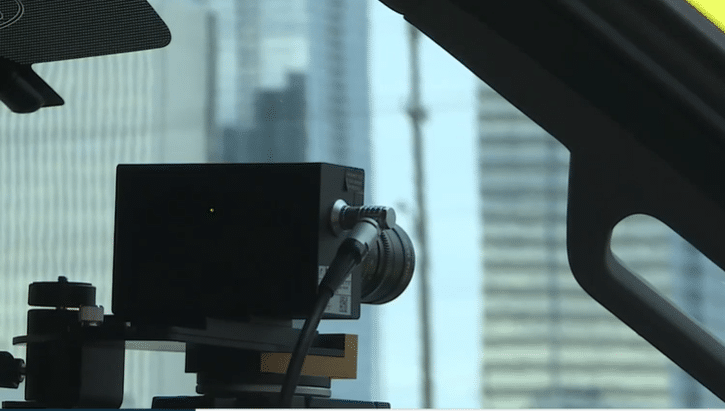Alberta ending photo radar on numbered provincial highways, ‘speed-on-green’ ticketing

Posted December 2, 2024 7:47 am.
Last Updated December 3, 2024 7:18 am.
The Alberta government is putting an end to photo radar on numbered provincial highways and making changes to its intersection safety devices.
Photo radar will be restricted to school, playground and construction zones, calling its previous use on highways a “cash cow:” a source of revenue “with no traffic safety benefit.”
The province is also eliminating the “speed on green” ticketing function at intersections. Those speed devices will be restricted to red light enforcement only.
The changes are coming into effect April 1, 2025.
“In far too many cases, photo radar penalizes hardworking Albertans without improving the safety of our roads,” said Devin Dreeshen, Alberta’s transportation minister.
Municipalities will be able to request additional radar locations in certain high-collision areas “on an exceptional basis,” which the province could choose to approve. Those exceptions would be subject to an audit every two years.
Every existing photo radar site in Alberta will now be reviewed, the UCP government said in a news release. Those deemed ineffective – which the province expects will be 70 per cent of them – will be removed.
Photo radar tickets generated about $145 million for Alberta municipalities last year.
“There won’t be any top-ups for municipalities for losing out on these locations,” Minister Dreeshen said.
Last November, the province banned photo radar on ring roads in Calgary and Edmonton, saying it was being used to generate income and not improve safety. Alberta banned new radar equipment and locations on Dec. 1, 2019 and later extended that ban to Dec. 1, 2024.
Following the ring road ban, the province gave Calgary and Edmonton the option to reintroduce those units to areas that will have an impact on safety like school, playground, and construction zones.
Calgary police chief blasts changes
Calgary’s police chief says the UCP government is ignoring what policing agencies think about removing photo radar.
Mark Neufeld, who is also the president of the Alberta Chiefs of Police, says the information they provided was not even acknowledge. He also said Dreeshen would not meet with him.
“I haven’t spoken to this minister personally, I have tried since the end of July for a meeting and reached out no less than eight times,” he says.
Neufeld says police provided a detailed case that shows the technology saves lives, frees up police officers for other service and — along with providing other cost-savings — is a major benefit for the health system.
He says the notion that photo radar is a cash cow is insulting to police across the province.
“Earlier today, the minister did a press release wearing an apron with a ‘no cash cow’ symbol on the front of it,” says Neufeld. “While some might have thought that was funny, we would encourage the minister to consider citizens who have injured or killed on Alberta roadways.”
A City of Edmonton report claims crashes were down almost 40 per cent at photo radar sites, and tickets eventually fell 63 per cent. City officials say that’s because drivers learned to slow down.
City councillor Michael Janz says Edmonton already has major speeding problems with photo radar in place. He worries it’ll get worse, because he says peer-reviewed studies have repeatedly shown that photo radar is an effective tool.
“We have increasingly deadly roads, faster accidents that we know are leading to deadly outcomes and the government of Alberta today made a change that doesn’t help safety in any way,” Coun. Janz said.
Some of the $29 million in photo radar fines Edmontonians pay each year go to engineering safer streets. The mayor is concerned about where that money will come from. And his council colleague wonders who will pick up the slack on the streets.
“Because we no longer have photo radar as an immediate tool that means we’re trying to replace that with sworn officers and we don’t enough sworn officers to actually do that work,” said Coun. Tim Cartmell.
But the transportation minister also says some studies have concluded that photo radar doesn’t actually slow down drivers. And he doesn’t believe less enforcement will lead to more accidents and higher insurance rates.
According to the province, photo radar was first introduced in 1987, and there are more than 2,300 radar sites in Alberta. Photo radar in Alberta generated $171 million in 2022.
Alberta says the top-five revenue-generating radar sites that year were:
- Strathcona County (Baseline Road/17 St.) — 52,558 tickets (144/day) for $5,956,573 in fines
- Edmonton (Gateway Blvd./34 Ave.) — 23,977 tickets (144/day) for $2,717,393 in fines
- Edmonton (170 St./118 Ave.) — 20,241 tickets (55/day) for $2,293,980 in fines
- Calgary (Beddington Tr./Country Hills Blvd.) — 19,337 tickets (53/day) for $2,173,167 in fines
- Edmonton (127 St./126 Ave.) — 18,705 tickets (51/day) for $2,119,900 in fines
–With files from Sean Amato








